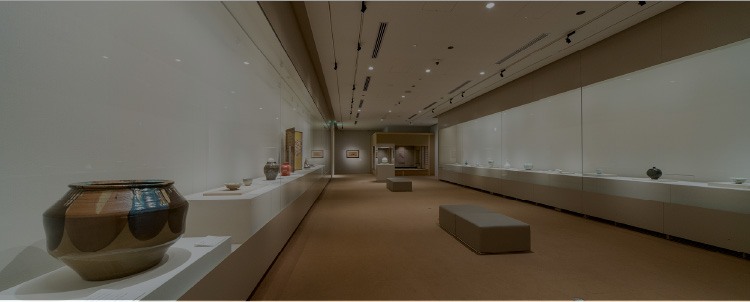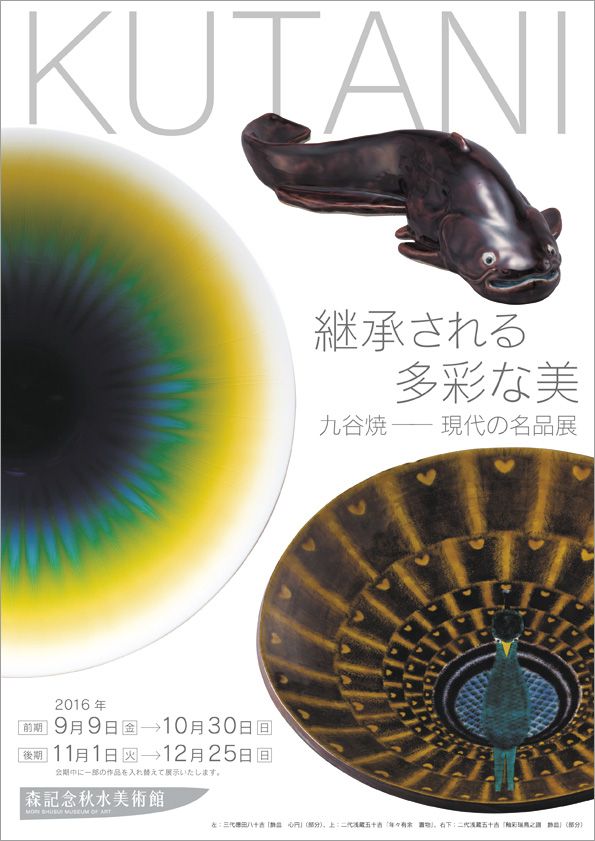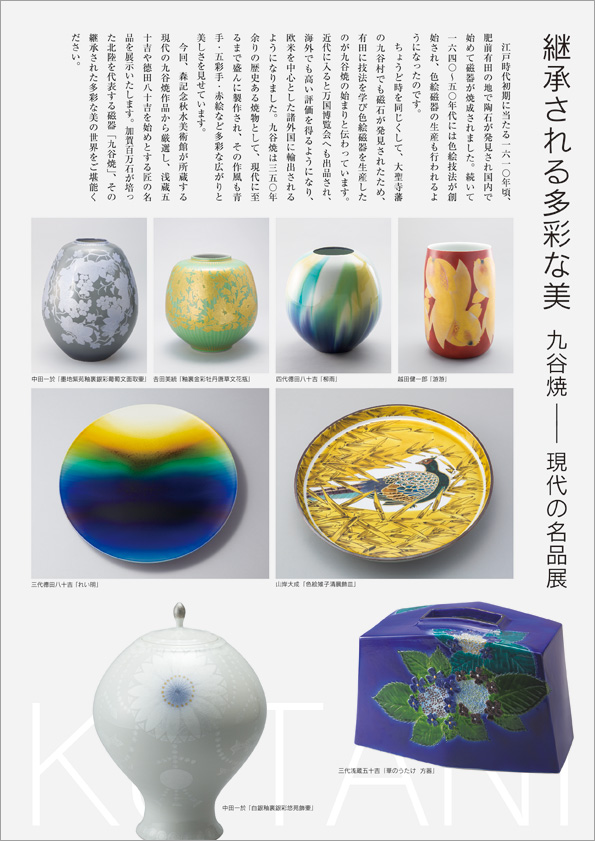Around 1610, in the early Edo period (ca. 1600–1870), porcelain stone was discovered in Arita, Hizen Province (in northwest Kyushu), enabling domestic production of porcelain for the first time. Following this, in the 1640s and 1650s, techniques developed to allow for the production of colored glazed porcelain.
Around this same time, porcelain stone was also discovered in Kutani Village in the Daishoji Domain (in modern-day Ishikawa Prefecture). Combined with techniques for colored porcelain learned from Arita, this led to the birth of Kutani Ware. As Japan entered the modern period, Kutani Ware was exhibited at international expositions, earning high acclaim even overseas and leading to exports of these items to Europe, North America, and elsewhere. Kutani Ware boasts over 350 years of history and a variety of distinctive styles, such as aode, gosaide, and akae, and significant production of Kutani Ware continues even today.
This exhibition features a choice selection of contemporary Kutani Ware items from the collection of the Shusui Museum of Art, produced by masters like Isokichi Asakura and Yasokichi Tokuda. We hope that visitors might enjoy this close look at Kutani Ware, an iconic symbol of the cultural richness of the Hokuriku region.





 Back
Back